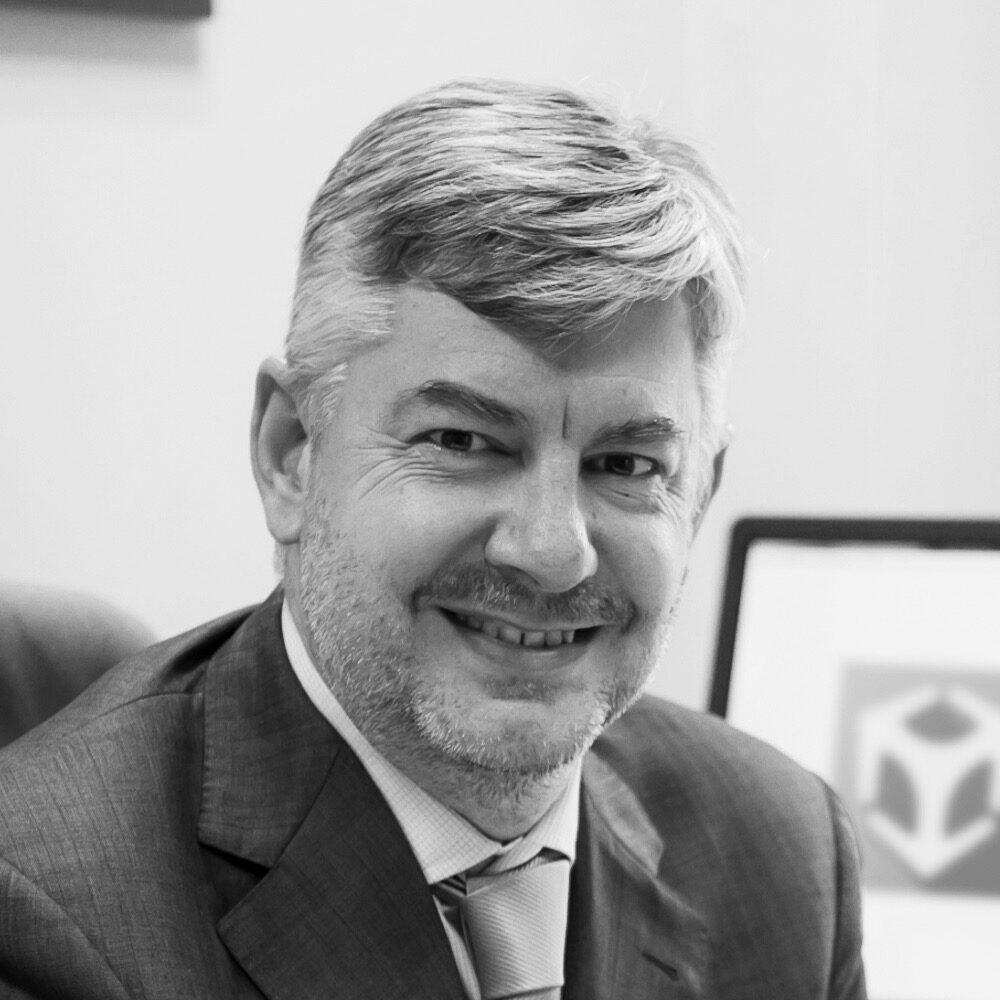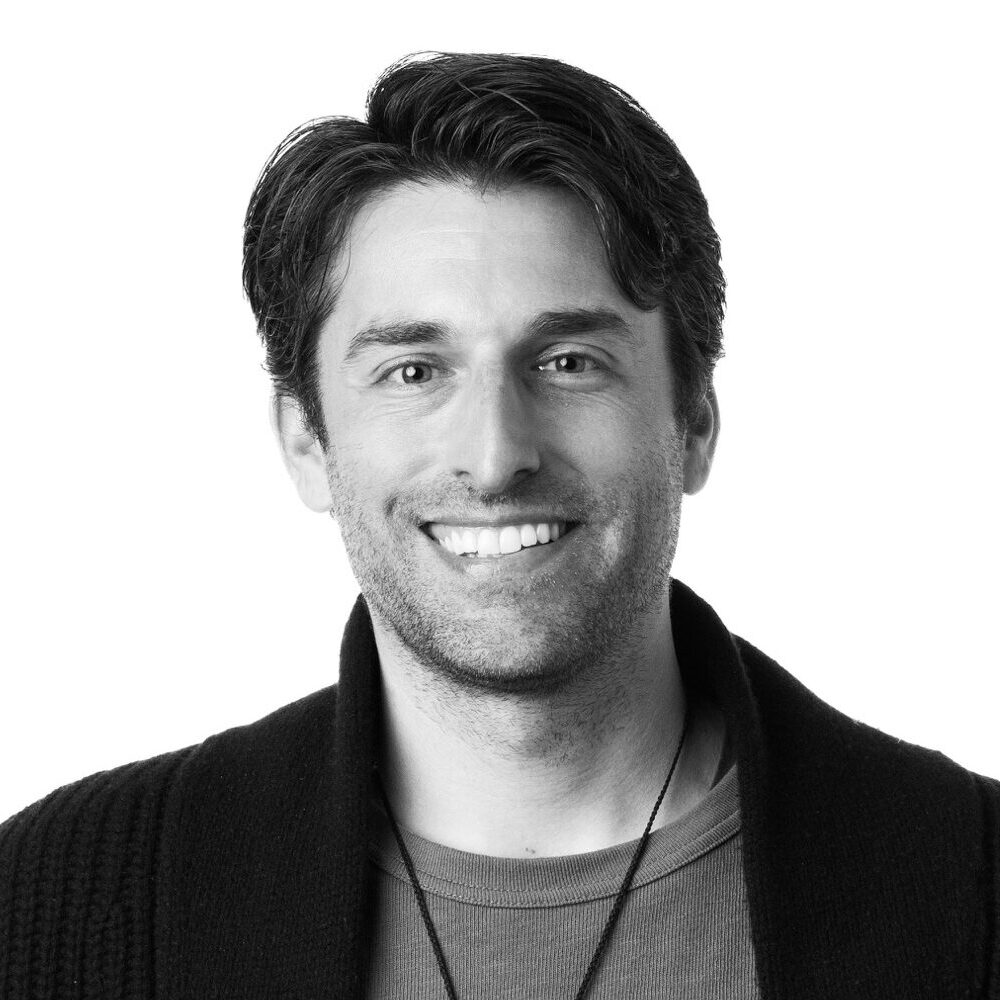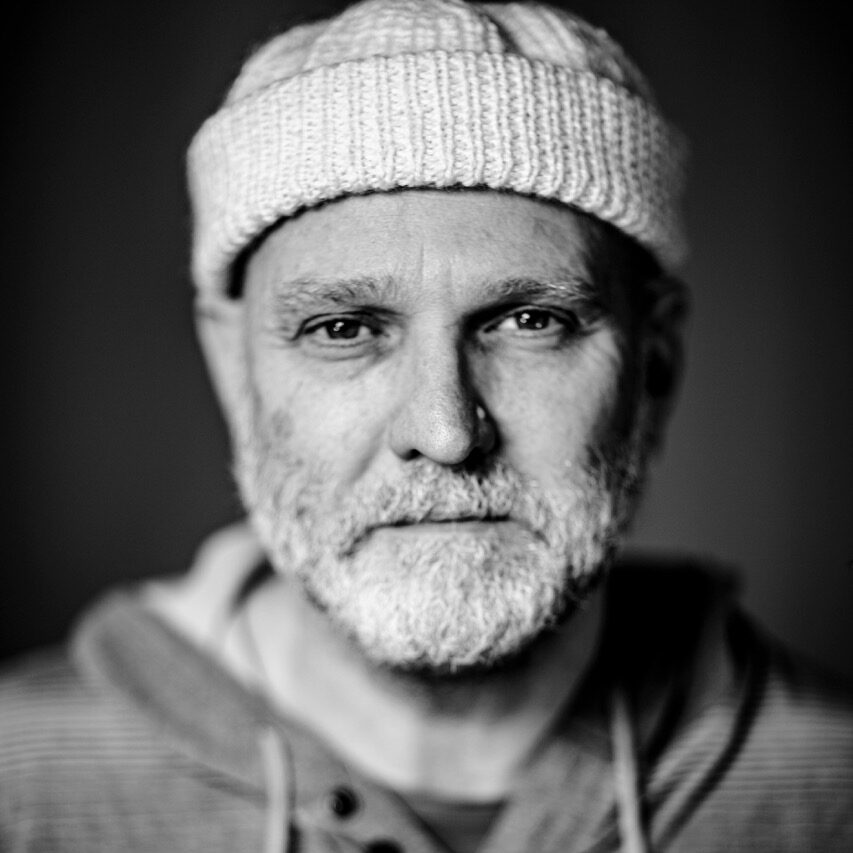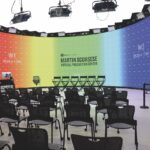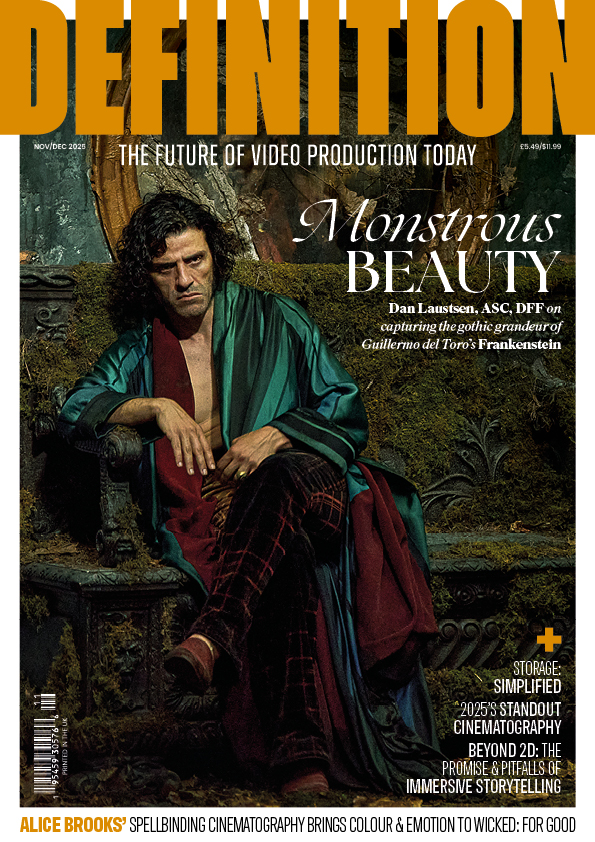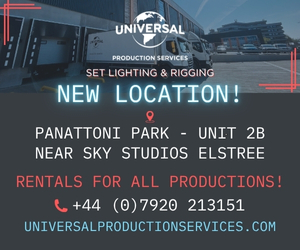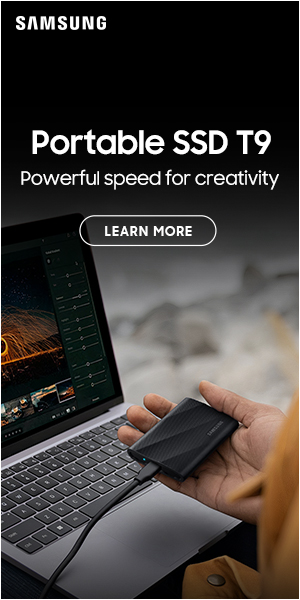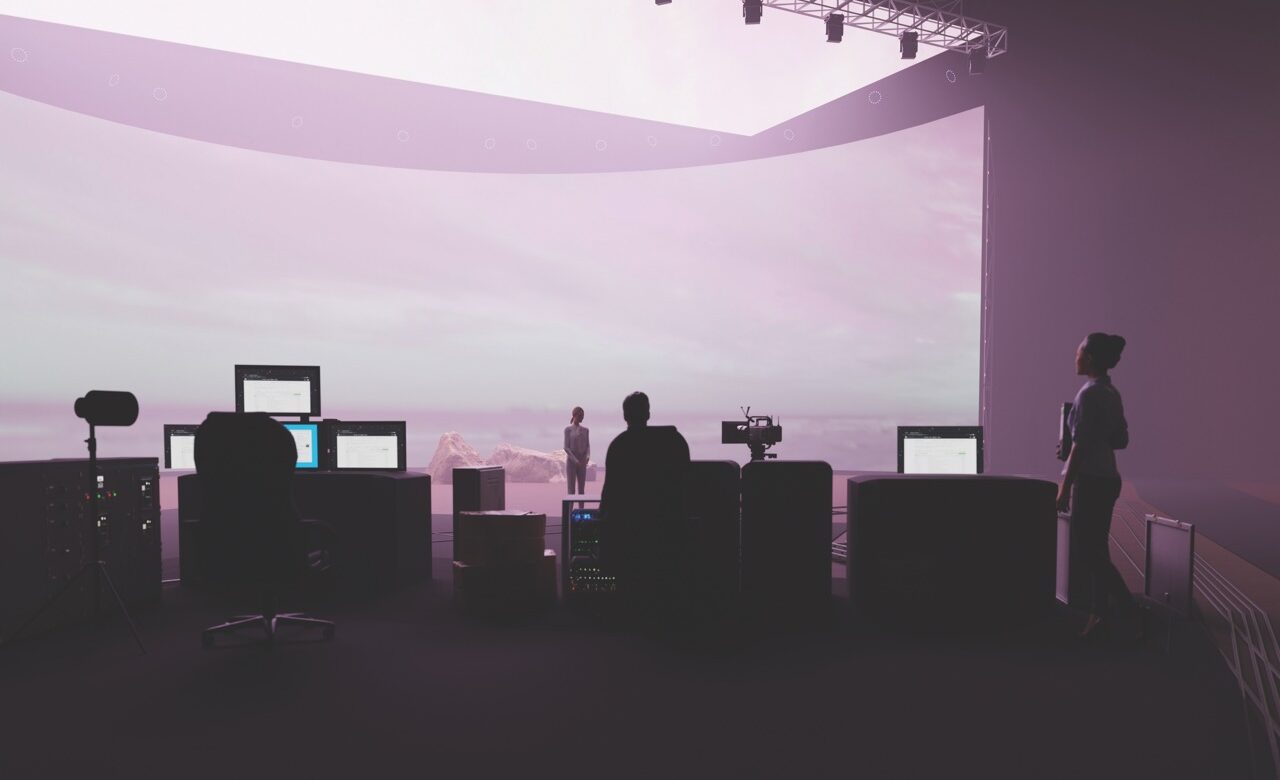
Round Table: Virtual production
Posted on Apr 14, 2025 by Admin
As virtual production matures, fresh opportunities – and challenges – are emerging. Join our expert panel as they explore the shifting landscape
The panel
- Miguel Churruca, Marketing and communications director, Brainstorm Multimedia
- Andrew Amato, Business development representative, Disguise
- Rob Chandler, Founder, Starting Pixel
Definition: How has virtual production evolved over the last few years, and what are the main technological innovations driving this?
Miguel Churruca: Virtual production has been around for decades, but it started to ramp up right before 2020 with the increased adoption of Unreal Engine as the de facto standard real-time render engine for virtual content creation, despite its limitations. Then Covid-19 brought travel restrictions and social distancing, and then content creators turned their heads to VP to keep live events and other content requirements alive, which boosted the interest around this tech.
Since the technology was mature enough, the interest was maintained once we returned to normality.
Filmmakers, broadcasters and production houses started to integrate virtual content into their workflows. Increased adoption of LED-based XR for VP also made it more appealing for high-end filmmakers and live events, as it allowed virtual content to be created for live audiences without relying on chroma sets and their limitations.
Andrew Amato: Over the last couple of years, VP has shifted from a relatively experimental tool meant for high-budget projects to a core part of modern stage production.
Advances in real-time rendering and high-resolution LED panels have made VP faster, more accessible and far more photorealistic. As adoption becomes more widespread, more assets can be shared, leading to reduced budgets; which is a win for everyone.
Rob Chandler: A new ‘VP-native’ generation is telling stories that lean into the tech, not just using it as a production tool to replace locations or set builds. VP supervisors are more appreciated, leading them to be considered as heads of departments.
On the tech side, LED walls have become smaller, alongside considerable improvements to panels with VP in mind, as well as advances in image-based lighting systems. We’re also seeing more standards appear, such as the SMPTE RIS OpenTrackIO and OpenLensIO, leading to simplified, more effective workflows.
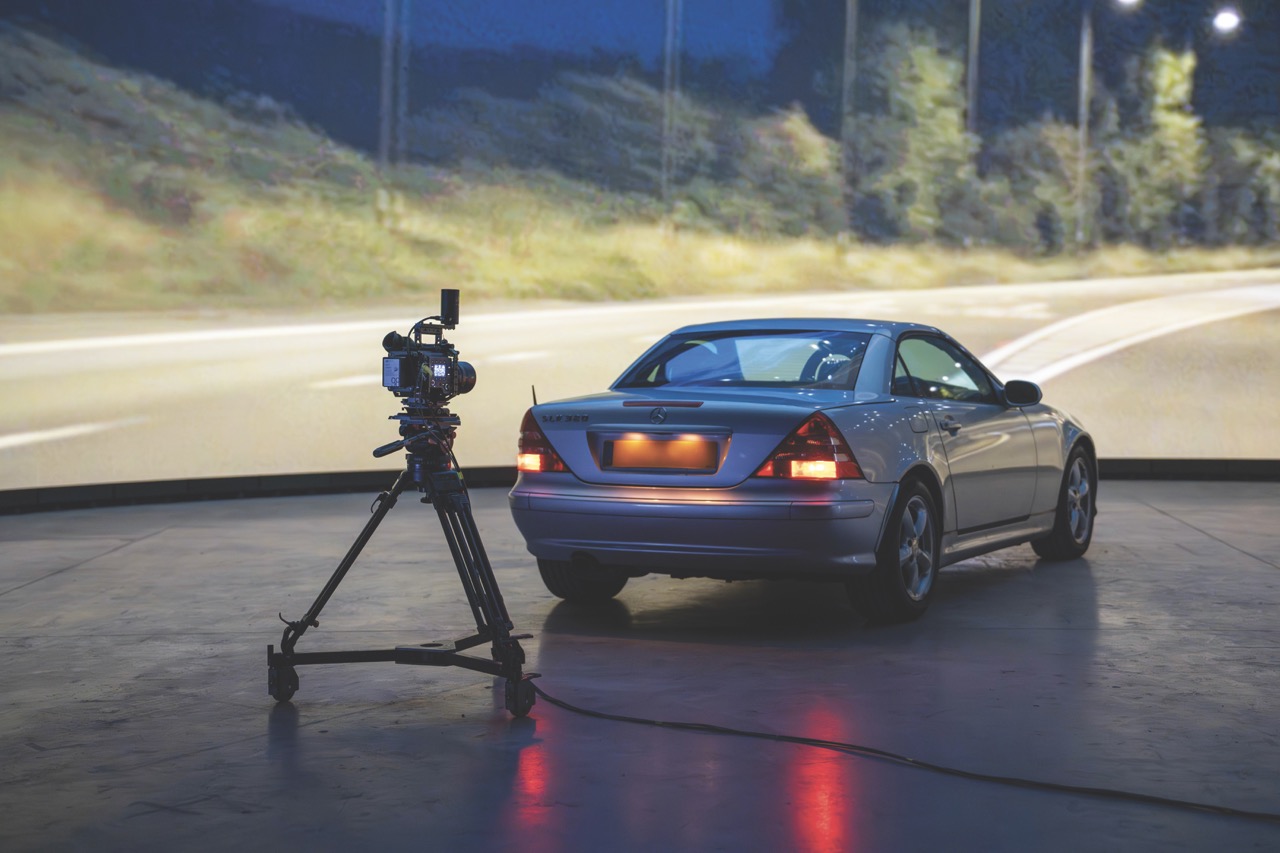
Def: What role is AI playing in VP – and where do you see it making the biggest impact?
Miguel Churruca: At the moment, I don’t see artificial intelligence playing a crucial role in VP, however this could change depending on how it evolves, especially in the field of generative AI. Potentially interesting applications for AI include background creation, data interaction, camera movement and tracking, keying and many more. It will be interesting to see how it handles automated or more tedious tasks, freeing up creators to focus on creation and not operation.
However, the results we achieve nowadays aren’t good enough in many of the aforementioned areas, so there’s a lot of room for improvement. But I’m sure it will play a crucial role in the near future, especially when the industry understands better how AI models can help with content creation.
Andrew Amato: AI is already streamlining some time-intensive tasks like rotoscoping and basic environment generation.
AI’s biggest impact will likely be in previsualisation and automated asset creation, allowing filmmakers to generate detailed environments and props in minutes instead of weeks. We see it in storyboarding as well. AI storyboards are a faster way for anyone to generate art references, which is crucial and often time-consuming.
Rob Chandler: We’re seeing AI being used across a wide range of applications, such as trackerless performance capture, complex coding requirements within the virtual art department (VAD), integration with Unreal Engine to improve real-time quality. There are also developments for 2D/2.5D plates, creation of digital humans and LED wall set extensions.
DEF: How is VP changing the role of the cinematographer?
Miguel Churruca: More cinematographers understand that VP is yet another tool they can use to improve their content creation, enhance their storytelling, optimise costs and, overall, allow for creating better movies. VP should not be an objective, but a tool, and the more the professionals understand the tool and its possibilities, the better the results. What I mean is that VP doesn’t necessarily replace the way filmmaking is done, but provides additional possibilities for better results.
Andrew Amato: VP requires cinematographers to work more like VFX supervisors in pre-production, blending real and virtual lighting and mastering how the physical camera interacts with the virtual world. Today’s DOPs need fluency in real-time engines and virtual lighting techniques to fully embrace VP’s creative potential.
Rob Chandler: The core responsibilities of the cinematographer remain the same – they’re still in charge of shaping the visual aesthetics of a production, including shot selection, lighting and lens choices. On VP sets, the cinematographer might need to collaborate with a different team than they would on a traditional set. This shift often requires adjustments to workflows and communication.
The inclusion of a VP supervisor ensures any knowledge gaps can be addressed across all areas of tech. The VP supervisor’s skills are as much soft as they are deep knowledge – they can speak both the technical and creative languages, making sure that production runs smoothly.
There’s still an ongoing discussion about the responsibility of the light from the LED wall given the technical requirements around colour calibration and matching, to make sure the camera sees what was intended when the virtual backdrops were created.
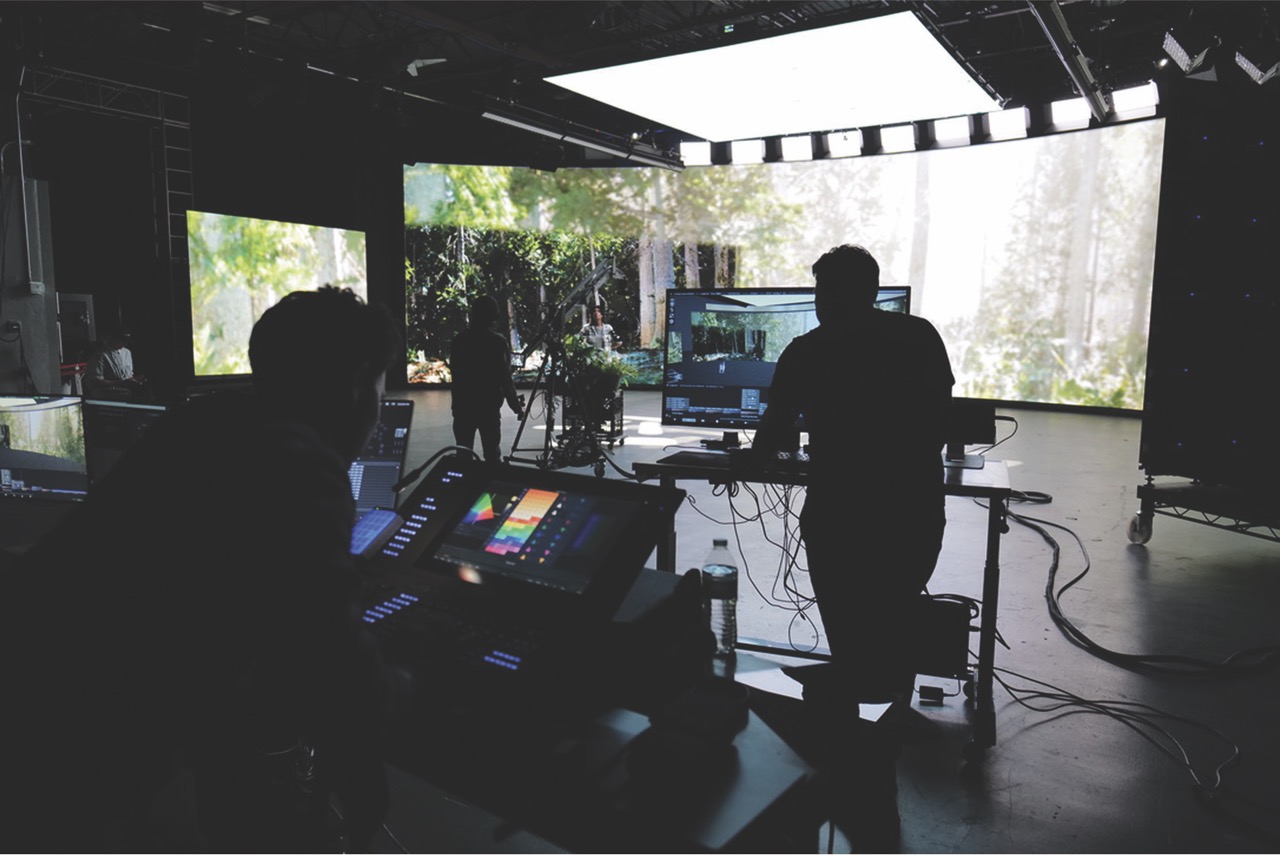
DEF: VP is generally associated with big-budget productions, but is that now changing? What do you think needs to happen to make it more accessible?
Miguel Churruca: It’s true that VP has typically been associated with high-budget Hollywood blockbusters and major broadcast studios, which may be a consequence of its initial implementations, especially when using large LED volumes. On the other side, VP can be done with chroma sets, which are commonly used in a variety of formats – and by content creators of any size.
However, recent technological advancements are helping democratise this field, making it accessible to a much wider range of creators, from small studios and independent filmmakers to educational institutions and corporate content creators.
Brainstorm, for instance, has implemented a range of cost-effective tools such as InfinitySet Lite and Edison, which can all help reduce the cost and complexity of VP.
Andrew Amato: VP is becoming more affordable, with smaller stages and off-the-shelf tools lowering the barrier of entry for mid-tier and even indie productions.
What is still needed is much broader education and clearer workflows to help smaller teams adopt the technology used for VP confidently. Like any tool, if used properly it can create incredible efficiencies, but it takes experience to wield it effectively.
Rob Chandler: It’s a general misconception that you have to throw the kitchen sink at VP to make it work. When the right set-up is used for the right shot, VP can be incredibly cost-effective. Smaller LED walls, the use of live chroma keying, iPhone camera tracking, etc, can all
come into play for simple shoots with close shots and static backplates.
DEF: Demand for virtual production skills is rising, but is education keeping pace? What are the biggest skills gaps in this area and how do we address them?
Rob Chandler: A general understanding of ‘the art of the possible’ is missing from traditional departments. We know there is still trepidation, possibly from having had poor experiences in the pioneering days, or misconceptions around time and budgets. We feel simple orientation training for above and below the line would greatly demystify the tech.
Senior VP supervisors are difficult to train. It’s as much having a set of soft, interpersonal skills as it is the expertise in production to be able to discuss and advise on what’s possible in pre-production and on-set with the directors and cinematographers, while managing the technicians responsible for imagery. These people tend to be very mature, experienced and really understand the VP architecture of a shoot.
Miguel Churruca: VP is no longer a niche inside the production workflow, it’s becoming a tool we should use when required, as I mentioned before. But it’s not an isolated thing, it must be integrated into the production workflow. We’ll still need cameras, camera operators, lighting, props and so on, but cameras and lenses will have to be tracked and calibrated, and lights must comply with the requirements of the LED wall or chroma set. This means the directors, DOPs and the rest of the crew must adapt to these requirements, especially when going about planning a scene.
Illuminating a chroma set or large LED wall requires different approaches, and both the DOP and lighting crew, as well as other professionals involved, must expand their knowledge and experience to comply with VP requirements, which still, of course, need their skills.
The good news is that universities and film schools have already identified this issue – and VP is now a part of the curriculum at many of these institutions, which is great news for the industry.
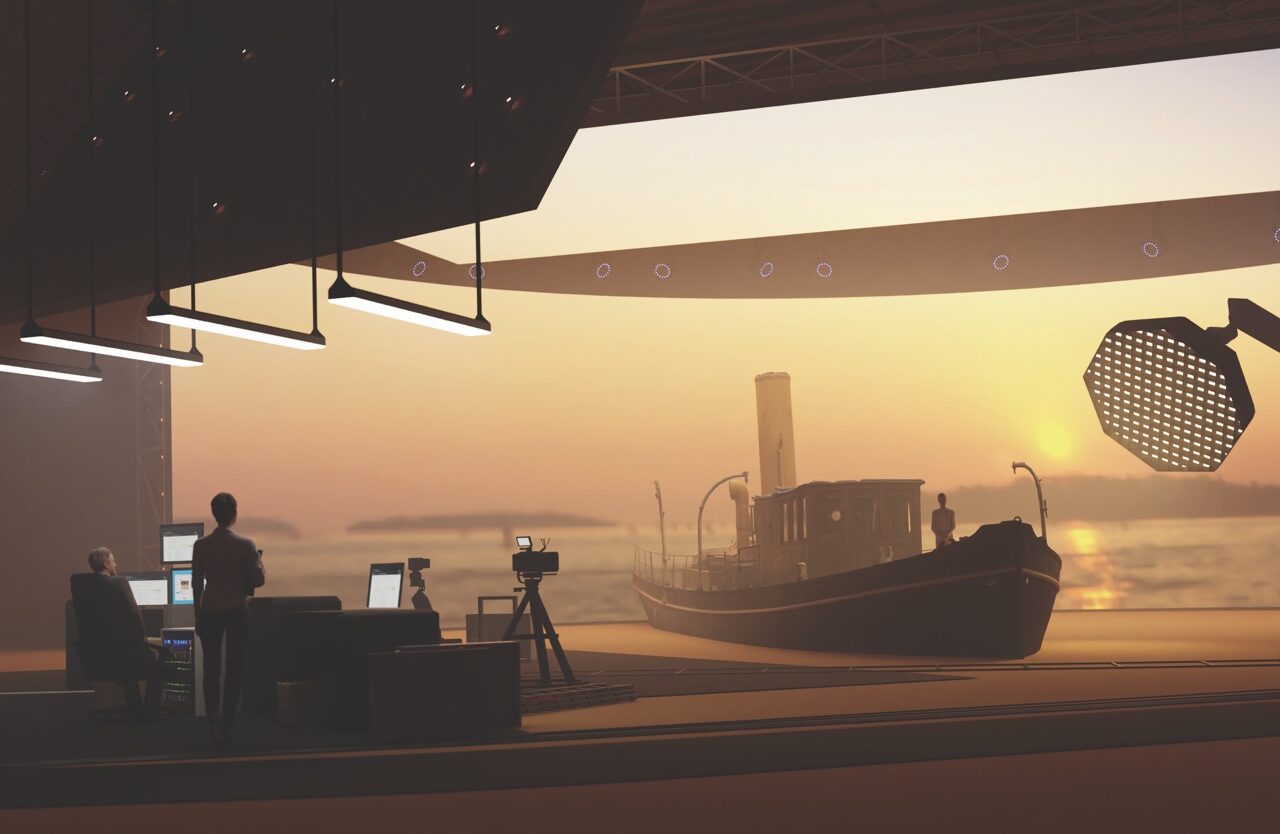
DEF: How has vP been changing the way in which filmmakers collaborate? Are there new challenges in how departments interact
– and what’s still missing from this process?
Miguel Churruca: The collaboration required for VP expands upon the kind of collaboration we’re used to when shooting for VFX, where careful planning results in reduced post-production times, improving cost-effectiveness. This can be translated to VP, which requires intense collaboration between professionals that are no longer islands but part of the process.
For instance, DOPs must interact with 3D artists, who now provide the 3D backgrounds beforehand and not just for post-production, to ensure they comply with the shooting requirements, looks, etc. When illuminating LEDs or chroma screens, the crew responsible for the chroma and LED volumes’ processors must interact with the lighting crew to ensure they comply with the chroma needs and DOP’s requirements as well.
At the end of the day, this makes filmmaking an even more collaborative process, with professionals who now need to understand new tools and processes to ensure correct results.
Andrew Amato: VP requires cross-departmental collaboration early in pre-production, blending creative and technical roles. The challenge is often any barriers that exist between traditional film crews and real-time artists.
Productions might need to employ ‘VP translators’ who bridge the gap between physical production, VFX and VADs. That’s essentially my role as a VAD/VP producer, in tandem with my VAD supervisor and VP supervisor.
Rob Chandler: Filmmakers have always loved to share their craft – and we see a continuation of that in the Starting Pixel community. There’s so much positivity, encouragement and, most importantly, curiosity when someone shares their latest project in our groups. There’s a palpable glee in the air when creative and tech teams have worked harmoniously together on a VP shoot. Any challenges have been discussed in advance, so we can focus on the craft rather than any technical concerns.
During pre-production, options such as virtual location scouting and previs can streamline the production process, ensuring as few creative changes as possible are required on-set.
DEF: With technology evolving so fast, how can filmmakers stay ahead of the curve and future-proof their careers?
Miguel Churruca: The good thing is that their skills are still needed, and it might just be a question of updating themselves to work with new tools and possibilities. VP is here to help improve storytelling and get better results, as well as to streamline everyone’s lives while still creating great content. It’s also true that the innovations in film production have been slow compared to broadcast, for instance, in which the pace of new technologies can often be crazy.
But this also shows that both professionals and companies see the benefits that these new technologies provide for their work, therefore they’re conscious of the need to be updated and aware of new technologies.
Andrew Amato: The key is to stay hands-on and open-minded. Filmmakers who understand both creative and technical storytelling will be better positioned to adapt. Even basic understandings of Unreal Engine, camera tracking and virtual lighting will be critical career future-proofing measures. If you have friends on a VP set, try to get in there and be a fly on the wall. It’s a guaranteed way to learn something new.
Rob Chandler: Demystifying VP is the only way to help decision-makers feel more comfortable with what to expect and what could be achieved with the technology. At Starting Pixel, we aim to share as much of the community’s knowledge with decision-makers across the industry – super-simple YouTube Shorts will break down complex production concepts, while our podcast series sits down with VP specialists to dive deeper into some technical and creative questions.
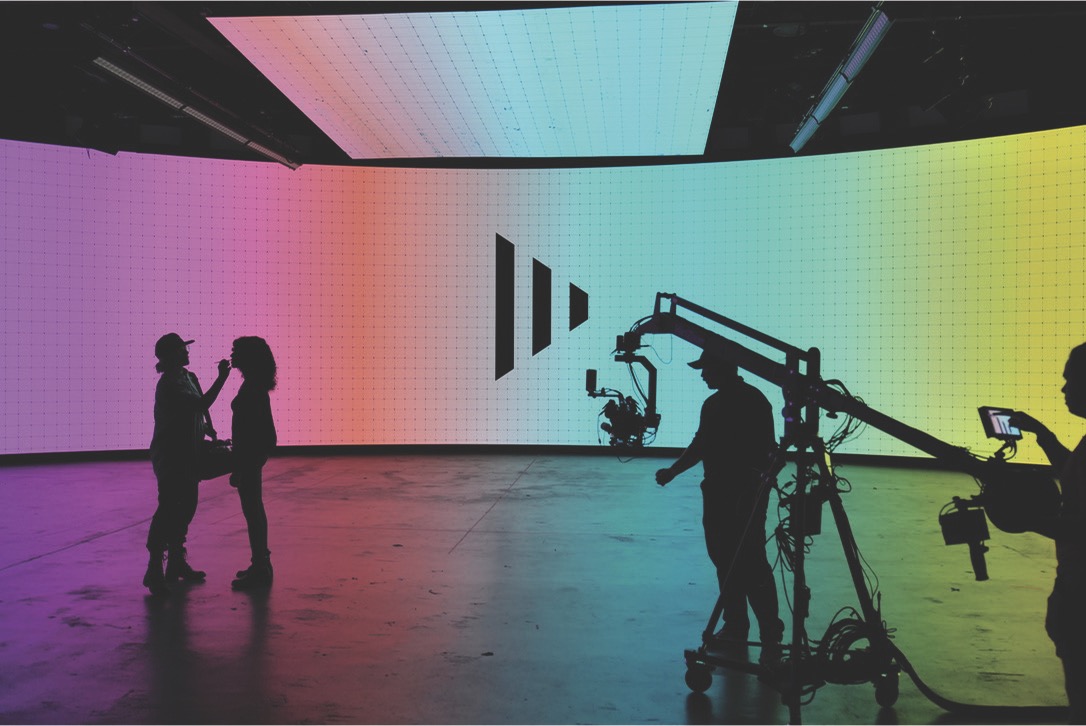
DEF: What’s the next big leap for virtual production?
Rob Chandler: It will be less of a big leap and more lots of small steps. Producers and creatives across film, HETV, advertising, brand comms and social get to understand its creative capabilities and find the sweet spot for their productions. More standards will start to emerge and VP supervisors will start to be considered as heads of departments with their broad technical and creative understanding. The cost of adoption will inevitably reduce and VP will get faster, better and easier to use, as is always the way with technology.
Miguel Churruca: I wish I knew! But seriously, the technology has matured in the last two to three years and is now in the process of consolidation, as we’ve said before. But technology evolves fast and we’ve seen over these past few years how the drawbacks of LED production have been solved in most cases, while chroma continues improving.
I can see, for instance, how AI could play an interesting role in keying, to significantly improve the results of the green screen or even provide keying without chroma. There’s still a long way to go, but technology is there and evolving rapidly. Generative AI should also be able to help designers improve their work, shortening delivery times, facilitating revisions and removing parts of the tedious, automated work.
This can also be applied to other ‘boring’ tasks such as camera and lens calibration, lighting design or dynamic lighting automation – and many others.
Andrew Amato: Great question! And a tough one given how rapidly technology changes. We’ve definitely moved past the big, slow, expensive phase into the phase in which everyone wants to slash production costs in half using VP.
My best guess is that we’ll start to get some smarter, AI-assisted environments that can adapt to camera movements and reduce the need for manual tweaking on-set. Cloud-based VP will also allow global teams to collaborate in real time within the same virtual scene, fundamentally altering how remote productions operate.
For more insights into the industry, read Round Table: Aerial filming.
This story appears in the March 2025 issue of Definition


